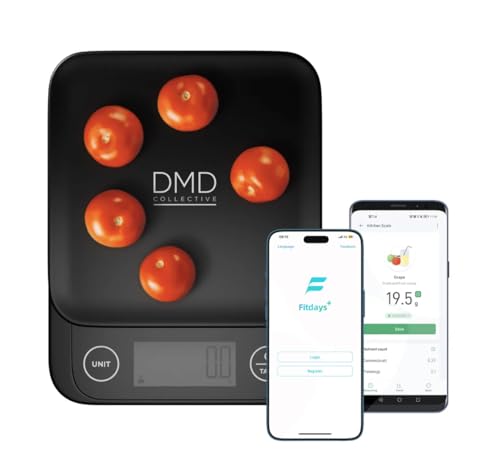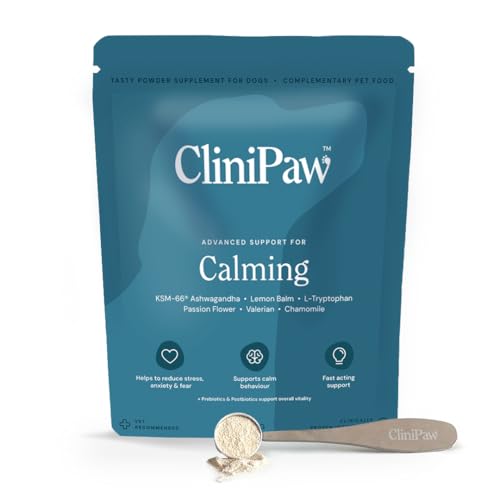




It might surprise you to learn that our furry companions perceive their surroundings quite differently than we do. Research indicates that their eyes have a limited spectrum, primarily tuning into shades of blue and yellow. This means the vibrant reds and greens we cherish are often lost on them, appearing instead as varying shades of grey or brown.
When I first adopted my Labrador, I noticed he would react differently to certain toys. The bright red ball I thought was perfect for fetch seemed to leave him unimpressed. However, when I switched to a bright blue one, his excitement was palpable. This experience opened my eyes to how they interact with their environment.
For those of us who want to enrich our pets’ lives, choosing toys and accessories in hues of blue or yellow can enhance their playtime experience. It’s a simple adjustment that can lead to a more engaging and stimulating environment for our four-legged friends.
Understanding Canine Visual Perception
Canines perceive their environment differently than humans, particularly in terms of hue. They are dichromats, meaning their vision is limited to two primary wavelengths. This contrasts with our trichromatic vision, which allows us to enjoy a broader spectrum of shades. Canines primarily discern blues and yellows, while their ability to perceive reds and greens is significantly diminished.
Shades They Recognise
Research indicates that canines perceive shades of blue and yellow more vividly. For instance, a bright blue toy will stand out much more than a red one, which may appear as a greyish hue to them. This preference can influence the choice of toys and training tools. When selecting items for your pet, opt for those in shades of blue or yellow to enhance visibility and engagement.
Practical Implications
Understanding this unique visual capacity can enhance interactions. For example, using blue or yellow markers for training can improve your furry friend’s responsiveness. Additionally, consider the lighting conditions; canines excel in low light due to their enhanced night vision, making dusk walks particularly enjoyable for them. Tailoring activities and environments to align with their visual strengths can significantly enrich their experience.
The Science Behind Canine Colour Vision
To truly grasp how our furry companions perceive their surroundings, it’s vital to understand their eye structure. Canines possess two types of photoreceptor cells known as cones, which enable them to detect light. Unlike humans, who have three types of cones, their visual spectrum is limited. This difference results in a reduced ability to distinguish certain shades.
Research indicates that canines primarily detect blue and yellow hues. For instance, a bright blue ball is more visible to them than a red one, which may appear greyish. This limitation stems from the evolutionary adaptations of ancestors, who relied on motion detection rather than fine details or vibrant colours while hunting.
Moreover, the presence of a higher concentration of rod cells allows them to excel in low-light conditions, providing them with superior night vision. This adaptation is advantageous for their predatory instincts, allowing them to navigate effectively during dawn and dusk.
Understanding this unique vision can enhance our interactions with them. For example, choosing toys in shades of blue or yellow can make playtime more enjoyable. Additionally, recognising that they don’t perceive the world in the same vibrant palette as we do fosters a deeper bond and appreciation for their perspective.
In conclusion, while their visual experience may not mirror ours, it shapes their understanding of the environment. Appreciating these differences allows us to cater to their needs more effectively and enrich our shared experiences.
How Canines Perceive the Spectrum
It’s fascinating to understand how our furry companions interpret the spectrum around them. Unlike us, they lack the ability to distinguish a wide range of hues. Their vision is more limited, primarily seeing shades of blue and yellow. This means that vibrant reds and greens are likely perceived as various shades of grey or brown.
Understanding the Visual World
I remember bringing home my first pup and being surprised by how he reacted to different objects. Toys that I thought were brightly coloured seemed dull to him. Instead of a bright red ball, he might only see a faded grey one. This realisation hit home during our walks; he was more interested in the scents and textures in his environment than the colours. For pet owners, knowing this can be beneficial, especially when choosing toys or training aids. Consider opting for items in blue or yellow hues, as these will be more engaging for your pet.
Training and Visual Cues
Utilising visual cues can enhance training sessions. Since canines respond better to certain colours, using a training collar that is vibrant in shades they can perceive may increase their focus and response. Additionally, while cleaning up after outdoor adventures, using the best detergent for karcher pressure washer can help maintain a clean space, making it safer and more appealing for your furry friend.
Understanding how our pets view their surroundings not only enriches our relationship with them but also enhances their overall experience in our shared world.
Comparing Canine Vision to Human Perception
Canines possess a distinct visual experience that sets them apart from humans. While we perceive a wide range of hues, their spectrum is more limited. A key difference lies in the number of photoreceptors–humans have three types (cones) sensitive to red, green, and blue wavelengths, whereas canines boast only two, primarily responsive to blue and yellow wavelengths.
In practical terms, this means that shades like red and green appear muted or greyish to them. For instance, a bright red ball might be indistinguishable from green grass, making it difficult for a canine to spot during playtime. Understanding this disparity can help owners choose toys and training tools that are more visible to their pets.
| Human Vision | Canine Vision |
|---|---|
| Three types of cones | Two types of cones |
| Broad spectrum including red, green, blue | Narrower spectrum, mainly blue and yellow |
| Rich perception of hues | Limited differentiation of reds and greens |
| Can differentiate around 1 million colours | Can differentiate approximately 20,000 colours |
This understanding can enhance how we engage with our furry friends. For example, toys in shades of blue or yellow are more likely to catch their attention. I remember when I bought a bright red frisbee, only to find my pup completely uninterested. Switching to a yellow one made a world of difference; he was chasing it around with excitement! This simple change improved our playtime immensely.
Another noteworthy aspect is the perception of brightness. Canines excel in low-light conditions thanks to a higher number of rods in their retinas, making them exceptional companions for evening strolls. Their ability to detect motion is also superior, allowing them to track moving objects effortlessly. This combination of traits contributes to their remarkable hunting and tracking abilities.
Recognising these variations in vision not only helps in selecting suitable toys but also in creating a more enriching environment for our four-legged companions. After all, understanding how they interpret the world around them allows us to foster a stronger bond and ensure their happiness.
The Impact of Colour Perception on Dog Training
Using shades that align with a canine’s perception can significantly influence training success. For instance, incorporating toys or training aids in blue or yellow can enhance visibility and engagement during sessions. This is particularly effective in outdoor environments where natural light may distort other hues.
Maximising Engagement
During my training routines with my Labrador, I noticed that he responded more enthusiastically to a bright yellow ball than to a red one. The latter seemed to lose its appeal quickly, while the former caught his attention consistently. Choosing training tools that resonate with their visual spectrum boosts motivation and focus. Additionally, using contrasting shades against the surroundings can make commands and signals clearer.
Reinforcement Techniques
Associating treats or praise with specific shades can create a positive reinforcement loop. For example, when my pup successfully performed a command using a blue marker, I would reward him immediately. Over time, he began to associate that hue with success and rewards, reinforcing the behaviour I wanted to encourage. Tailoring your approach in this manner can lead to quicker learning and a happier training experience for both you and your companion.
Choosing the Right Colours for Dog Toys and Accessories
For selecting toys and accessories that will truly captivate your furry companion, focus on shades that stand out in their perception. Based on my experience, opting for bright yellows and blues tends to attract their attention much more than reds or greens.
Key Recommendations
- Bright Yellow: This hue is highly visible and often associated with excitement. Toys in this shade are easily spotted in various environments.
- Sky Blue: This tone is another favourite. It is clear and distinct, making it ideal for fetching games or outdoor play.
- High Contrast: Mixing colours that create contrast, like bright yellow with dark blue, can enhance visibility and engagement.
Material Considerations
When choosing materials, consider those that naturally reflect light. Textured surfaces can add another layer of interest. Rubber and certain plastics often provide the best contrast, making them visually stimulating for your pet.
In my experience, toys that combine these hues with interesting shapes can also keep your dog engaged longer. I’ve noticed that my own dog prefers toys that not only stand out in colour but also have varying textures, making playtime more enjoyable.
- Look for toys that combine bright colours with unique textures.
- Test different shades to see which ones grab your pet’s interest the most.
- Keep the environment in mind; a bright toy on a dark background will pop more.
By focusing on these aspects, you can ensure that playtime is not only fun but also visually engaging for your canine friend. It’s all about enhancing that bond through thoughtful choices.
FAQ:
What colours can dogs actually see?
Dogs perceive colours differently than humans. They have dichromatic vision, meaning they primarily see two colours: blue and yellow. While humans can see a spectrum that includes reds and greens, dogs lack the receptors to distinguish these colours. Therefore, what appears red to us may look more like a shade of brown or grey to a dog.
How does a dog’s vision differ from human vision?
In addition to colour perception, dogs’ vision is adapted for low-light conditions. They have more rod cells in their retinas, which helps them see better in dim light compared to humans. However, this means that their overall visual acuity is not as sharp as ours. Dogs also have a wider field of view due to the positioning of their eyes, allowing them to detect movement more effectively.
Can dogs see any colours beyond blue and yellow?
Research suggests that dogs might see shades of grey and possibly some variations of blue and yellow. They cannot perceive the full range of colours that humans can, which includes reds and greens. This limitation means that dogs rely more on their sense of smell and movement rather than colour to understand their surroundings.
How does understanding a dog’s colour vision help in training?
Knowing that dogs see primarily in blue and yellow can assist in training and behaviour modification. For instance, using toys or training equipment in these colours may make them more engaging for dogs. It also helps owners select appropriate rewards or signals that are more visible to their pets, thereby improving communication and effectiveness during training sessions.







